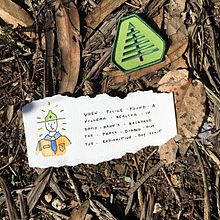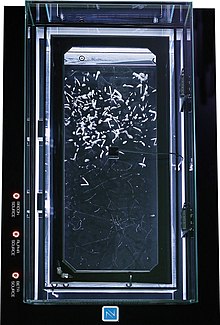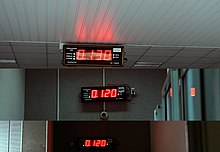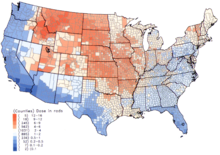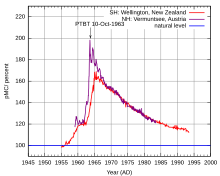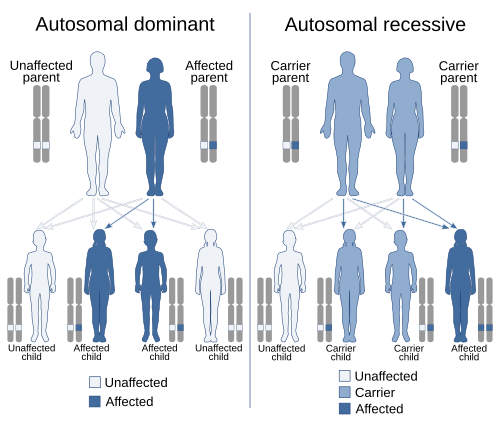https://en.wikipedia.org/wiki/Lanthanide_probes
Lanthanide probes are a non-invasive analytical tool commonly used for biological and chemical applications. Lanthanides are metal ions which have their 4f energy level filled and generally refer to elements cerium to lutetium in the periodic table. The fluorescence of lanthanide salts is weak because the energy absorption of the metallic ion is low; hence chelated complexes of lanthanides are most commonly used. The term chelate derives from the Greek word for “claw,” and is applied to name ligands, which attach to a metal ion with two or more donor atoms through dative bonds. The fluorescence is most intense when the metal ion has the oxidation state of 3+. Not all lanthanide metals can be used and the most common are: Sm(III), Eu(III), Tb(III), and Dy(III).
Lanthanide probes are a non-invasive analytical tool commonly used for biological and chemical applications. Lanthanides are metal ions which have their 4f energy level filled and generally refer to elements cerium to lutetium in the periodic table. The fluorescence of lanthanide salts is weak because the energy absorption of the metallic ion is low; hence chelated complexes of lanthanides are most commonly used. The term chelate derives from the Greek word for “claw,” and is applied to name ligands, which attach to a metal ion with two or more donor atoms through dative bonds. The fluorescence is most intense when the metal ion has the oxidation state of 3+. Not all lanthanide metals can be used and the most common are: Sm(III), Eu(III), Tb(III), and Dy(III).
History
EuFOD, an example of a europium complex
It has been known since the early 1930s that the salts of certain lanthanides are fluorescent. The reaction of lanthanide salts with nucleic acids
was discussed in a number of publications during the 1930s and the
1940s where lanthanum-containing reagents were employed for the fixation
of nucleic acid structures. In 1942 complexes of europium, terbium, and samarium were discovered to exhibit unusual luminescence properties when excited by UV light. However, the first staining of biological cells with lanthanides occurred twenty years later when bacterial smears of E. coli were treated with aqueous solutions of a europium complex, which under mercury lamp illumination appeared as bright red spots.
Attention to lanthanide probes increased greatly in the mid-1970s when
Finnish researchers proposed Eu(III), Sm(III), Tb(III), and Dy(III)
polyaminocarboxylates as luminescent sensors in time-resolved
luminescent (TRL) immunoassays.
Optimization of analytical methods from the 1970s onward for lanthanide
chelates and time-resolved luminescence microscopy (TRLM) resulted in
the use of lanthanide probes in many scientific, medical and commercial
fields.
Techniques
There
are two main assaying techniques: heterogeneous and homogeneous. If two
lanthanide chelates are used in the analysis one after the other—it is
called heterogeneous assaying. The first analyte is linked to a specific binding agent on a solid support such as a polymer and then another reaction couples the first poorly luminescent lanthanide complex with a new better one.
This tedious method is used because the second more luminescent
compound would not bind without the first analyte already present.
Subsequent time resolved detection of the metal-centered luminescent probe yields the desired signal. Antigens, steroids and hormones
are routinely assayed with heterogeneous techniques. Homogeneous assays
rely on direct coupling of the lanthanide label with an organic
acceptor.
The relaxation of excited molecules states often occurs by the
emission of light which is called fluorescence. There are two ways of
measuring this emitted radiation: as a function of frequency (inverse to wavelength) or time.
Conventionally the fluorescence spectrum shows the intensity of
fluorescence at different wavelengths, but since lanthanides have
relatively long fluorescence decay times (ranging from one microsecond
to one millisecond), it is possible to record the fluorescence emission
at different decay times from the given excitation energy at time zero.
This is called time resolved fluorescence spectroscopy.
Mechanism
Lanthanides can be used because their small size (ionic radius) gives them the ability to replace metal ions inside protein complex such as calcium or nickel. The optical properties of lanthanide ions such as Ln(III) originate in the special features of their electronic [Xe]4fn configurations.
These configurations generate many electronic levels, the number of
which is given by [14!/n!(14- n)!], translating into 3003 energy levels
for Eu(III) and Tb(III).
The energies of these levels are well defined due to the shielding of the 4f orbitals by the filled 5s and 5p sub-shells,
and are not very sensitive to the chemical environments in which the
lanthanide ions are inserted. Inner-shell 4f-4f transitions span both
the visible and near-infrared ranges.
They are sharp and easily recognizable. Since these transitions are
parity forbidden, the lifetimes of the excited states are long, which
allows the use of time resolved spectroscopy,
a definitive asset for bioassays and microscopy. The only drawback of
f-f transitions are their faint oscillator strengths which may in fact
be turned into an advantage.
The energy absorbed by the organic receptor (ligand) is
transferred onto Ln(III) excited states, and sharp emission bands
originating from the metal ion are detected after rapid internal
conversion to the emitting level. The phenomenon is termed sensitization of the metal centered complex (also referred to as antenna effect) and is quite complex.
The energy migration path though goes through the long-lived triplet state of the ligand. Ln(III) ions are good quenchers
of triplet states so that photobleaching is substantially reduced. The
three types of transitions seen for lanthanide probes are: LMCT, 4f-5d,
and intraconfigurational 4f-4f. The former two usually occur at energies
too high to be relevant for bio-applications.
Applications
Cancer research
Screening tools for the development of new cancer therapies are in high demand worldwide and often require the determination of enzyme kinetics.
The high sensitivity of lanthanide luminescence, particularly of
time-resolved luminescence has revealed to be an ideal candidate for
this purpose. There are several ways of conducting this analysis by the
use of fluorogenic enzyme substrates, substrates bearing donor/acceptor
groups allowing fluorescence resonance energy transfer (FRET) and
immunoassays. For example, guanine nucleotide binding proteins consist
of several subunits, one of which comprises those of the Ras subfamily. Ras GTPases act as binary switches by converting guadenosine triphosphate (GTP) into guadenosine diphosphate (GDP).
Luminescence of the Tb(III) complex with norfloxacin is sensitive to
determine the concentration of phosphate released by the GTP to GDP
transformation.
pH probes
Protonation of basic sites in systems comprising a chromophore and a luminescent metal center leads the way for pH sensors. Some initially proposed systems were based on pyridine derivatives but these were not stable in water. More robust sensors have been proposed in which the core is a substituted macrocycle usually bearing phosphinate, carboxylate or four amide
coordinating groups. It has been observed that lanthanide luminescent
probe emission increases about six-fold when decreasing the pH of the
solution from six to two.
Hydrogen peroxide sensor
Hydrogen
peroxide can be detected with high sensitivity by the luminescence of
lanthanide probes—however only at relatively high pH values. A
lanthanide-based analytical procedure was proposed in 2002 based on the
finding that the europium complex with various tetracyclines binds hydrogen peroxide forming a luminescent complex.
Estimating molecule size and atom distances
FRET
in lanthanide probes is a widely used technique to measure the distance
between two points separated by approximately 15–100 Angstrom.
Measurements can be done under physiological conditions in vitro with
genetically encoded dyes, and often in vivo as well. The technique
relies on a distant- dependent transfer of energy from a donor
fluorophore to an acceptor dye. Lanthanide probes has been used to study
DNA-protein interactions (using a terbium chelate complex) to measure distances in DNA complexes bent by the CAP protein.
Protein conformation
Lanthanide probes have been used to detect conformational changes in proteins. Recently the Shaker potassium ion channel, a voltage-gated channel involved in nerve impulses was measured using this technique.
Some scientist also have used lanthanide based luminescence resonance
energy transfer (LRET) which is very similar to FRET to study
conformational changes in RNA polymerase upon binding to DNA and
transcription initiation in prokaryotes. LRET was also used to study the
interaction of the proteins dystrophin and actin
in muscle cells. Dystrophin is present in the inner muscle cell
membrane and is believed to stabilize muscle fibers by binding to actin
filaments. Specifically labelled dystrophin with Tb labelled monoclonal
antibodies labeled were used.
Virology
Traditional virus diagnostic procedures are being replaced by sensitive immunoassays
with lanthanides. The time resolved fluorescence based technique is
generally applicable and its performance has also been tested in the
assay of viral antigens in clinical specimens.
Medical imaging
Several systems have been proposed which combine MRI capability with lanthanides probes in dual assays. The luminescent probe may for instance serve to localize the MRI contrast agent.
This has helped to visualize the delivery of nucleic acids into
cultured cells. It should be noted in this case that lanthanides are not
used for their fluorescence but their magnetic qualities.
Biology - Receptor-ligand interactions
Lanthanide
probes displays unique fluorescence properties, including long lifetime
of fluorescence, large Stokes shift and narrow emission peak. These
properties is highly advantageous to develop analytical probes for
receptor-ligand interactions. Many lanthanide-based fluorescence studies
have been developed for GPCRs, including CXCR1, insulin-like family peptide receptor 2, protease-activated receptor 2, β2-adrenergic receptor, and C3a receptor.
Instrumentation
The emitted photons
from excited lanthanides are detected by highly sensitive devices and
techniques such as single-photon detection. If the lifetime of the
excited emitting level is long enough, then time-resolved detection
(TRD) can be used to enhance the signal-to-noise ratio.
The instrumentation used to perform LRET is relatively simple, although
slightly more complex than conventional fluorimeters. The general
requirements are a pulsed UV excitation source and time-resolved
detection.
Light sources which emit short duration pulses can be divided into the following categories:
- Flash tubes
- Mechanically or electronically chopped discharge lamps
- Spark gaps
- Pulsed lasers
The most important factors in the selection of the pulsed light source for are the duration and intensity of the light.
Pulsed lasers for the 300 to 500 nm range have now replaced spark caps
in fluorescence spectroscopy. There are four general types of pulsing
lasers used: lasers with pulsed excitation, lasers with G-switching,
mode locked lasers and cavity dumped lasers. Pulsed nitrogen lasers (337 nm) have often been used as an excitation source in time resolved fluorometry.
In time resolved fluorometry the fast photomultiplier tube
is the only practical single photon detector. Good single photon
resolution is also an advantage in counting photons from long decay
fluorescent probes, such as lanthanide chelates.
These commercial instruments are available in the market today: Perkin-Elmer Micro Filter Fluorometer LS-2, Perkin-Elmer Luminescence Spectrometer Model LS 5, and LKB-Wallac Time-Resolved Fluorometer Model 1230.
Ligands
Lanthanide probes ligands
must meet several chemical requirements for the probes to work
properly. These qualities are: water solubility, large thermodynamic
stability at physiological pHs, kinetic inertness and absorption above 330 nm to minimize destruction of live biological materials.
The chelates which have been studied and utilized to date can be classified into the following groups:
- Tris chelates (three ligands)
- Tetrakis chelates (four ligands)
- Mixed ligand complexes
- Complexes with neutral donors
- Others such as: phthalate, picrate, and salicylate complexes.
The efficiency of the energy transfer from the ligand to the ion is determined ligand-metal bond. The energy transfer is more efficient when bonded covalently than through ionic bonding. Substituents in the ligand which are of electron-donating such as hydroxy, methoxy and methyl groups increase the fluorescence. The opposite effect is seen when an electron-withdrawing group (such as nitro) is attached.
Furthermore, the fluorescence intensity is increased by fluorine
substitution to the ligand. The energy transfer to the metal ion
increases as the electronegativity of the fluorinated group makes the europium-oxygen bond of a more covalent nature. Increased conjugation by aromatic substituents by replacing phenyl by naphtyl groups is shown to enhance fluorescence.



